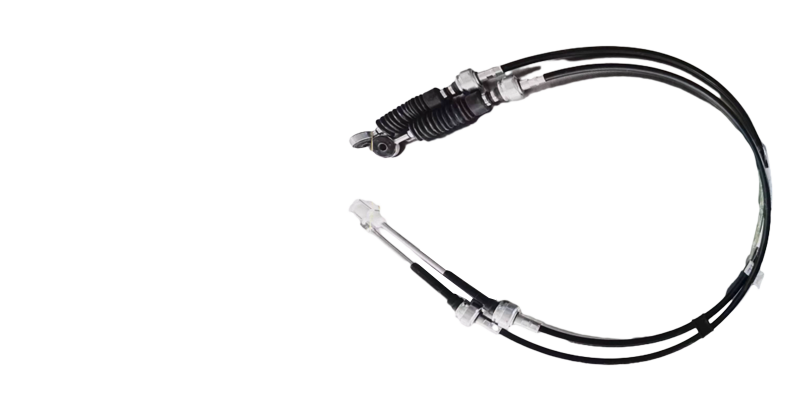master cylinder clutch line
Understanding the Master Cylinder Clutch Line A Key Component of Vehicle Performance
In the intricate world of automotive engineering, the master cylinder clutch line plays a crucial role in the performance and functionality of a vehicle's clutch system. This component is essential for transmitting hydraulic pressure, which ultimately enables the smooth engagement and disengagement of the vehicle's clutch. Understanding how the master cylinder clutch line works can enhance a driver’s appreciation for their vehicle while also fostering informed decisions regarding maintenance and repairs.
The Role of the Master Cylinder
To grasp the importance of the master cylinder clutch line, one must first understand what the master cylinder itself is. Located within the vehicle’s hydraulic brake and clutch systems, the master cylinder converts mechanical force into hydraulic pressure. When the driver presses the clutch pedal, this mechanical movement forces a piston within the master cylinder to compress brake fluid. This hydraulic fluid then travels through the master cylinder clutch line down to the slave cylinder, which finally engages or disengages the clutch.
Hydraulic System Mechanics
The master cylinder operates within a closed hydraulic system. The fluid utilized is typically a specially formulated hydraulic fluid that can resist temperature variations and maintain consistency under pressure. As the driver engages the clutch pedal, the increased pressure pushes the fluid through the clutch line, which has been designed to withstand high pressures without leaking. The fluid’s flow is directed towards the slave cylinder, which applies necessary force to disconnect the engine from the transmission, allowing for gear changes.
Importance of the Clutch Line
The master cylinder clutch line is typically made of durable materials designed to handle the strenuous requirements of hydraulic systems. Over time, however, these components can wear out due to exposure to heat, pressure fluctuations, and the general wear and tear of regular vehicle operation. A compromised clutch line can lead to decreased performance, resulting in issues like difficulty in shifting gears, a spongy clutch pedal, or even complete clutch failure.
master cylinder clutch line

Symptoms of a Failing Clutch Line
Drivers should be aware of several symptoms that indicate potential issues with the master cylinder clutch line. Common warning signs may include
1. Difficulty Shifting Gears Increased resistance when changing gears might indicate a problem with hydraulic pressure transmission. 2. Spongy Pedal Feel A clutch pedal that feels soft or spongy often suggests air in the hydraulic system, which could mean a leak in the master cylinder or clutch line. 3. Fluid Leaks Visible signs of hydraulic fluid near the master cylinder or along the clutch line can indicate a leak that requires immediate attention. 4. Burning Smell Overheating from excessive friction due to disengagement issues can produce a burning smell, highlighting the need for repair or replacement.
Maintenance and Repair
Proper maintenance of the master cylinder clutch line can extend the lifespan of the entire clutch system. Regular inspections for leaks, as well as checking fluid levels, can help identify issues before they escalate. When replacing a compromised line, quality components that meet or exceed OEM specifications should be used to ensure reliability and safety.
If a driver notices any of the aforementioned symptoms, they should consult a qualified mechanic immediately. Professional technicians can conduct a thorough diagnosis, which may involve pressure testing and visual inspections of the master cylinder, clutch line, and slave cylinder. By addressing these issues early, drivers can avoid costly repairs and maintain optimal vehicle performance.
Conclusion
The master cylinder clutch line is an essential component in the hydraulic system that allows for effective gear changes in manual vehicles. Understanding its function and being aware of potential issues can empower drivers to take proactive steps in vehicle maintenance. Proper care and timely intervention not only ensure a smoother driving experience but also contribute to the overall longevity of the vehicle. By appreciating the importance of such a vital component, drivers can foster a deeper connection with their vehicles and ensure optimal performance for years to come.
-
Workings of Clutch Pipe and Hose SystemsNewsJun.04,2025
-
The Inner Workings of Hand Brake Cable SystemsNewsJun.04,2025
-
The Secrets of Throttle and Accelerator CablesNewsJun.04,2025
-
The Hidden Lifeline of Your Transmission Gear Shift CablesNewsJun.04,2025
-
Demystifying Gear Cables and Shift LinkagesNewsJun.04,2025
-
Decoding Clutch Line Systems A Comprehensive GuideNewsJun.04,2025
